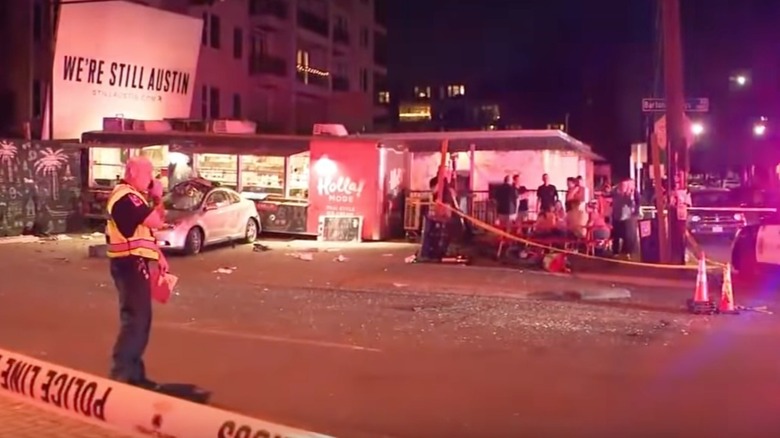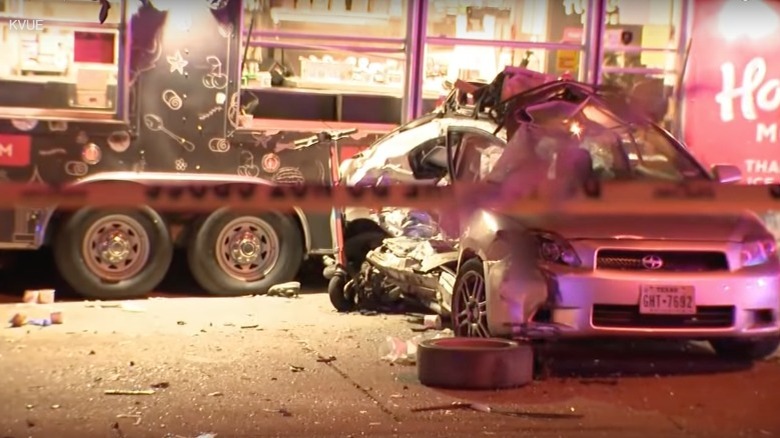Scary Crash Involving Texas Food Truck Sends 9 People To The Hospital
On April 8, a truck rammed into the side of a sedan and plowed it into a group of people at a nearby food truck in Austin. 11 people were injured and nine were hospitalized, the Austin-Travis County EMS told local NBC affiliate KXAN. Two had life threatening injuries, two had potentially serious injuries, and the remaining five were admitted with non-life-threatening injuries.
"We heard a car speeding up, revving up, and then all of a sudden a huge pop, and we came out here as fast as we can to find this huge truck hit a tiny little car and made the biggest noise," one witness told the station.
It later came out that 10 of the 11 people involved were employees of Sorenson, a communications company based in Salt Lake City. The company explained on its website that the workers had gone to Austin for a DeafNation Expo.
People wrote that the police could not confirm what led to the crash, but both drivers were reportedly helping them with their inquiries. The police also told KXAN that it was too early to say whether any charges would be brought against the drivers.
Crashes have been on the rise in the U.S.
One person who claims to have witnessed the incident explained what they saw in the Facebook comments of the press briefing. "I was behind the car that got hit," the person wrote. "I called it in. [The driver] tried to speed across [an intersection without a traffic light] to beat the truck. I watched, knowing he wouldn't make it as the truck was also going very fast."
In March, The New Republic investigated why even though driving decreased in the United States during the pandemic, the amount of car crashes increased. After all, European countries also stopped driving as much and had to deal with the stresses of a pandemic, yet crashes decreased there. So something about the United States makes its drivers more prone to accidents.
Charles Marohn, the founder of Strong Towns, explained that after the country designed highways, it employed the same logic of maximizing car mobility to local streets. "The challenge with our streets is that when you combine speeds that are above 20 miles an hour with random complexity, you get a high degree of collisions, traumatic injury, and death," he stated. Such complexity has occurred and one can only hope that the outcome of the recent collision is not death.

